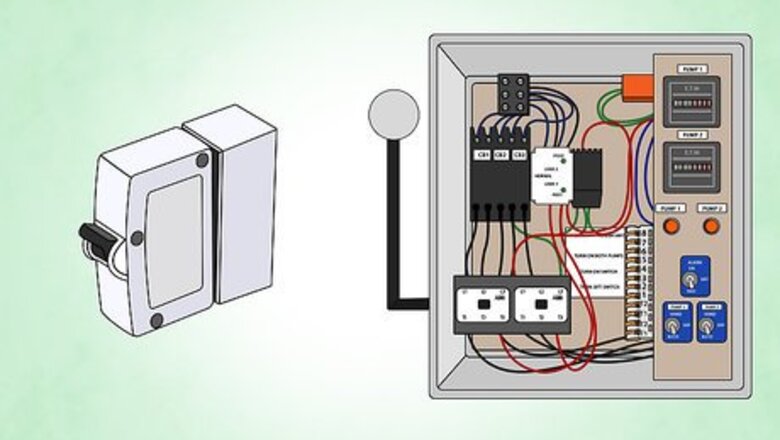
views
Extinguishing Electrical Fires
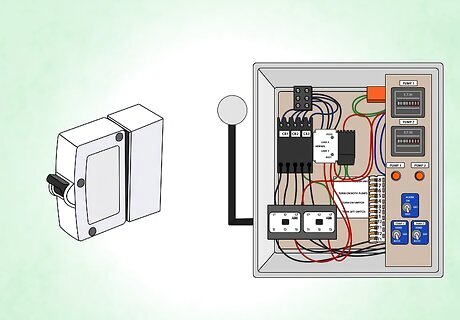
Stop the fire before it starts. The majority of electrical fires stem from faulty electrical wiring or poor maintenance of electrical systems. To stop an electrical fire before it starts, do not overload electrical outlets and ensure that all electrical work is performed to code by a licensed electrician. Also keep electrical systems clear of dust, trash, and spider webs, which can all lead to fires. You should also use circuit breakers and fuses as often as possible, which are easy steps to take in order to stop a power surge from starting a fire.
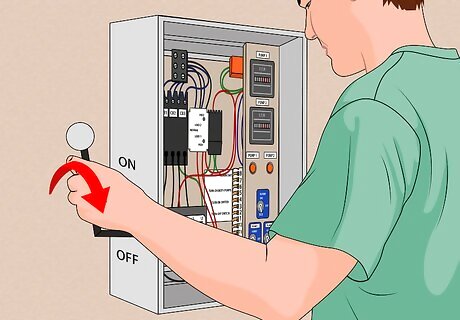
Turn off power to the electrical system. If an electrical system begins sparking or a fire ignites at a wire, appliance, or outlet, then cutting the power to the system is the first, best step to take. If the source is only sparking or the flame has not yet spread at all, this step alone may be enough to extinguish the flame. You should cut the power at the breaker box rather than turning off the wall switch connected to the outlet. If the problem stems from wiring or an appliance, do not simply pull the plug on the device. The electrical problem occurring could very well be creating an electrocution hazard as well.
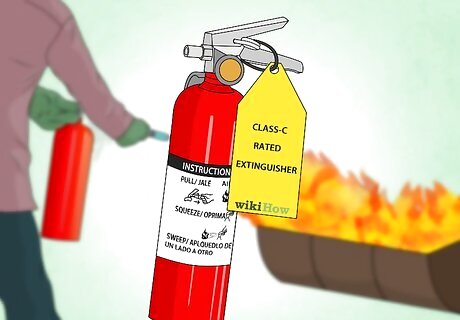
Use a Class C-rated extinguisher if you cannot cut the power to the source. The acceptable type of fire extinguisher in this situation depends entirely upon if you are able to cut the power to the source or not. If you don’t know where the breaker is, the box is locked, or it would simply take way too long to access, then you must use a Class C-rated fire extinguisher. Class C extinguishers are either carbon dioxide (CO2) or dry chemical extinguishers, and they will specifically include “Class C” on the label on the canister. To use the extinguisher, pull any pin stopping you from depressing the handle, point the horn at the base of the fire, and hold down the handle. As you see the flames shrinking, approach the source and continue spraying until the fire is fully extinguished. If you cannot extinguish the fire within five seconds of using the extinguisher, then it’s too large. Evacuate to a safe place and call 911. Since the faulty wiring is still receiving power in this case, the fire can reignite. You should still cut power to the source as soon as possible. You must use a Class C extinguisher because they contain non-conductive substances. A Class A extinguisher will only contain highly pressurized water, which conducts electricity and can create electrocution risks. Another way to identify CO2 and dry chemical extinguishers is by their red coloring (water extinguishers are silver). CO2 extinguishers also have a hard horn at the tip instead of just a hose, and they lack a pressure gauge.
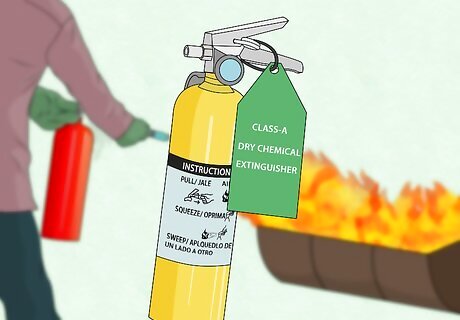
Use a Class A or dry chemical extinguisher if you have cut the power. If you are able to cut the power to the source completely, then you have turned the Class C electrical fire into a standard Class A fire. In this case, you can use a water-based Class A extinguisher in addition to the previously mentioned extinguishers. Class A extinguishers and multipurpose dry chemical extinguishers are actually recommended in this scenario because CO2 extinguishers run a higher risk of the fire smoldering and reigniting once the CO2 dissipates. CO2 extinguishers can also cause respiratory problems in confined spaces such as houses or small offices.
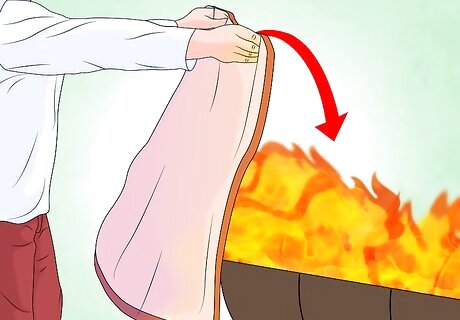
Use a fire blanket to smother the fire. Alternatively, you can use a fire blanket to smother the fire, but this step is only applicable if you were able to turn off the power to the source completely. Though wool (most fire blankets are chemically treated wool) is a good insulator of electricity, you still don’t want to get close enough to the source and risk electrocution if the power remains on. To use a fire blanket, remove from its packing, grip the unfolded blanket in front of you with your hands and body protected by it, and drape the blanket over the small fire. Do NOT throw the blanket at the fire. Not only is this very effective in the early stages but does not damage surrounding area or objects.
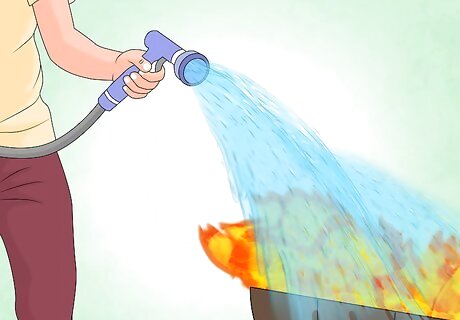
Use water to extinguish the fire. If you don’t have any type of fire extinguisher or fire blanket around, then you can use water; however, ONLY use water if you have 100% turned the power to the source OFF. Otherwise you not only risk electrocution, but also spreading around the electricity, which can spread the fire much more quickly. Throw the water at the base or seat of the fire. Water at the speed you can draw it from a sink will only be effective if the fire is very small and contained. Otherwise, it will spread faster than you can douse it.
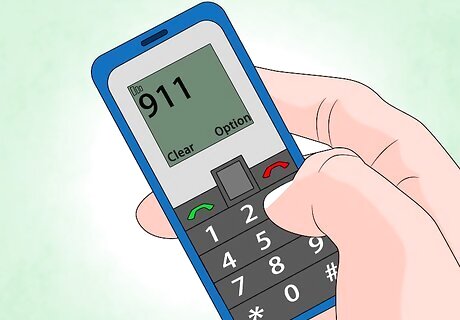
Call 911. Even if the fire is out, you should still call 911. Smoldering objects can reignite, and proper firefighters will be able to isolate and remove any risks completely.
Extinguishing Liquid/Oil Fires
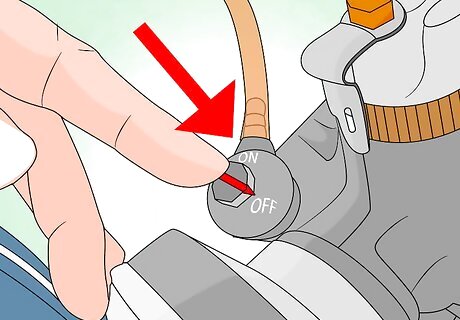
Shut off the fuel supply. In applicable situations, the first thing you should do for fires involving flammable liquids is to turn the fuel supply off. For instance, if a static discharge ignites gasoline around a fuel pump, the first thing you should do is hit the emergency shutoff valve located nearby at all pumping stations. This act severs the small fire from the very large fuel sources around it. In many instances where the flammable liquid is the only fuel source, the fire may extinguish itself as soon as you cut the fuel supply.
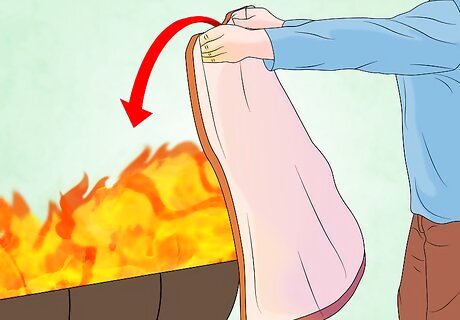
Use a fire blanket to smother the fire. You can also use a fire blanket on small Class B fires. If a fire blanket is readily available, this can be the easiest, least damaging method to extinguish it. To use a fire blanket, remove from its packing, grip the unfolded blanket in front of you with your hands and body protected by it, and drape the blanket over the small fire. Do NOT throw the blanket at the fire. Ensure the fire is not too large for the blanket to smother it. Vegetable oil igniting in a frying pan, for instance, is a small enough fire for a fire blanket.
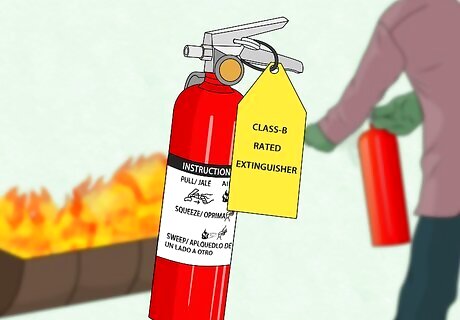
Use a Class B fire extinguisher. As with electrical fires, water-based (Class A) fire extinguishers should not be used on liquid or oil fires. Carbon dioxide (CO2) and dry chemical fire extinguishers will have a Class B rating. Check the label on the extinguisher and ensure that it says Class B before using it on a flammable liquid fire. To use the extinguisher, pull any pin stopping you from depressing the handle, point the horn at the base of the fire, and hold down the handle. As you see the flames shrinking, approach the source and continue spraying until the fire is fully extinguished. If you cannot extinguish the fire within five seconds of using the extinguisher, then it’s too large. Evacuate to a safe place and call 911. The only exception to this rule when the liquid fire stems from vegetable oil or animal fats in commercial-size deep fryers and other restaurant equipment. The large size and extreme heat and fuel source of these devices get their own classification for fire extinguishers—Class K extinguishers. Restaurants with this type of equipment are legally required to keep a Class K extinguisher present. Do NOT throw water on liquid or oil fires. Water does not mix with the oil. When they are together, the oil stays on top of the water. The water will then boil and become steam 'very quickly.’ This quick boil is dangerous. Since the water is on the bottom of the oil, it sprays hot, burning oil in every direction as it boils off and evaporates. This then spreads the fire very quickly.
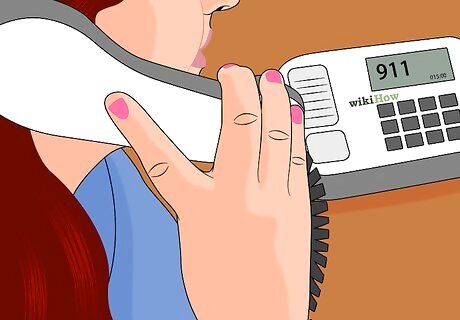
Call 911. Even if the fire is out, you should still call 911. Smoldering objects can reignite, and proper firefighters will be able to isolate and remove any risks completely.
Extinguishing Organic Fires
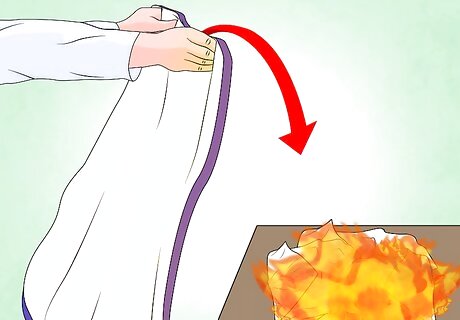
Use a fire blanket to extinguish the fire. If the fuel source for the fire is a solid combustible material—wood, cloth, paper, rubber, plastic, etc.—then you have a Class A fire. A fire blanket is a quick, easy way to extinguish the initial stage of a Class A fire. The fire blanket removes oxygen from the fire, which starves the fire of it’s ability to burn. To use a fire blanket, remove from its packing, grip the unfolded blanket in front of you with your hands and body protected by it, and drape the blanket over the small fire. Do NOT throw the blanket at the fire.
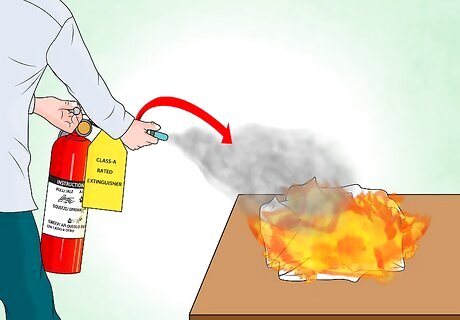
Use a Class A fire extinguisher on the fire. If you do not have a fire blanket handy, then you can easily use a fire extinguisher on a Class A fire. Ensure that the label on the extinguisher reads Class A. To use the extinguisher, aim at the base of the fire and sweep the spray back and forth across it until it’s out. If you cannot extinguish the fire within five seconds of using the extinguisher, then it’s too large. Evacuate to a safe place and call 911. Solely Class A extinguishers will be silver and will have a pressure gauge for the water inside; however, many multipurpose dry chemical extinguishers will also be rated for Class A fires. You can use a carbon dioxide (CO2) extinguisher on Class A fires if it’s the only type of extinguisher you have, but it’s not recommended. Class A objects tend to smolder for a long time, and the fire can very easily reignite as the CO2 dissipates.
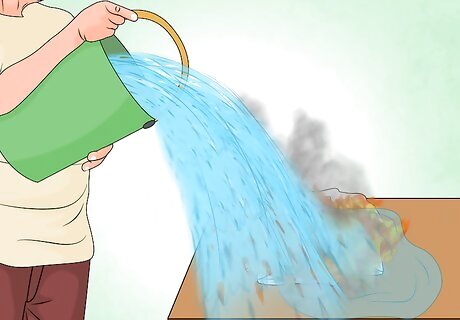
Use plenty of water. A specifically Class A fire extinguisher is essentially water under pressure, so you can use large amounts of water from a sink if it’s the only thing you have available. If the fire is obviously spreading faster than you can douse it—or if it’s producing too much smoke for you to try safely—then you must evacuate the space and call 911 instead.
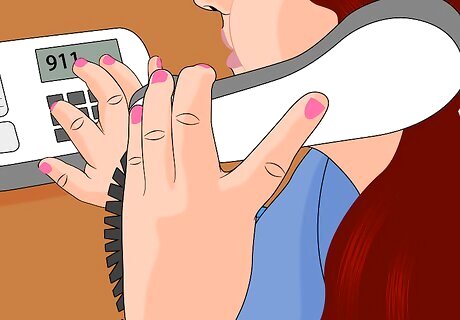
Call 911. As with any type of fire, you can to call 911 even if you manage to extinguish the fire. Emergency responders will ensure that the fire has no chance of reigniting.












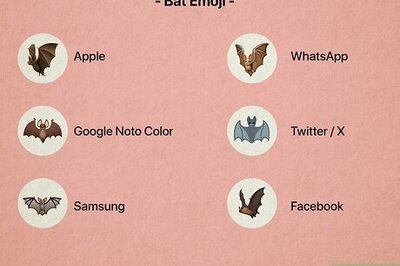






Comments
0 comment